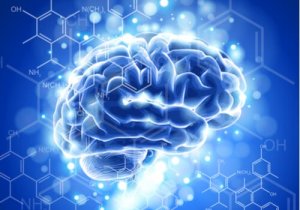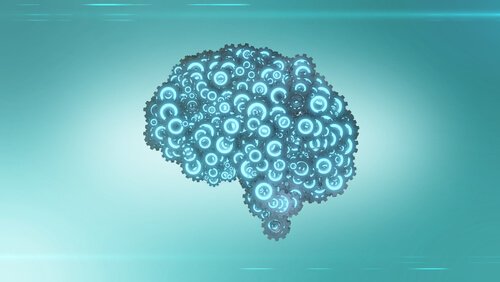The Characteristics and Development of Neuroethics


Written and verified by the psychologist Bernardo Peña Herrera
Neuroethics is a discipline that’s making headway in the international scientific community due to the increase in neuroscience research of recent years.
However, neuroethics as a field of study that came onto the scene as early as 2002, when a group of specialists from different fields came together to study the ethical and social implications of brain research. They felt that classical bioethics was too generic to address the specific ethical issues of neuroscience.
Also in 2002, the Society for Neuroscience organized the very first neuroethics conference. The International Neuroethics Society was founded in 2006. Members of the organization are professionals who are concerned about the social, legal, political, and ethical implications of neuroscience advances.
As you can see, neuroethics is relatively recent. In this article, we’re going to look at the development of neuroethics from the beginning to the present day. This overview of the history of neuroethics will give you a deeper understanding of this burgeoning science.

The Origins of Neuroethics
To understand how neuroethics became a science, you have to keep the interdisciplinary nature of the neurosciences in mind. The field of neuroethics resulted from a large number of disciplines that studied the nervous system.
Over time, the need for cross-disciplinary understanding grew, and researchers were increasingly concerned about ethical issues. Thus, the classic questions about the nervous system and the mind-brain relationship came into play.
In addition to all of these factors, bioethics also advanced a lot. Bioethics studies the ethical aspects of life sciences such as biology and medicine. The advance in bioethics pushed neuroscientists to try and keep up with important ethical and moral questions.
On the other hand, the consequence of the parallel progression of neuroscience itself meant that the research moved towards subjects related to the mind, such as cognitive and emotional functions and pathologies.
Thus, neuroethics was born due to the need for a discipline concerned with establishing adequate precepts for research in these fields.
A 2002 Meeting in San Francisco
Stanford University and the University of California organized a meeting in San Francisco in 2002 that marked the beginning of neuroethics as an independent scientific discipline. About 150 neuroscientists attended the conference. Together, they laid out the foundation of neuroethics.
During the conference, the attendees came up with a definition of neuroethics and its scope of study:
“The study of the ethical, legal, and social questions that arise when scientific findings about the brain are carried into medical practice, legal interpretations, and health and social policy. The examination of what’s right and wrong, good and bad about the treatment of, perfection of, and welcome invasion or worrisome manipulation of the human brain.”
Although they came up with a definition, the researchers still had a lot to flesh out. One particularly complicated aspect was that almost the entire focus of neuroethics was on nervous system illnesses.
Another problem was the lack of attention on prevention and the functional aspect of the nervous system, to the clear detriment of sciences such as psychology. As you can see, we still have a long way to go to reach a broader and more inclusive perspective of neuroethics.

Characteristics and Development of Neuroethics
The development of neuroethics is a reflection of the evolution of four primary areas of study:
- Neural science and the self. The relationship between neuroscience and freedom and human responsibility. It also studies the biological foundation of personality, behavior, and emotions.
- Neural science and social practices. This research focuses on social pathologies and memory and learning processes. It also studies personal and criminal responsibility, which sometimes overlaps into forensic neuropsychiatry.
- Ethics and practice of neuroscience. This area of study is concerned with the ethics of clinical practice. It covers things such as neurosurgery, psychopharmaceuticals, genetic therapy, neural prosthetics, etc. It also tries to adapt research and therapeutic approaches to nerve pathologies.
- Neuroscience and public discourse. This refers to the relationships between the neurosciences and the academic formation of neuroscience researchers. It’s also related to things such as disclosure and the relationship to social media.
In conclusion, neuroethics is a relatively new multidisciplinary science with enormous future potential and long-term goals. It is and will continue to be a fertile field of research.
Neuroethics is a discipline that’s making headway in the international scientific community due to the increase in neuroscience research of recent years.
However, neuroethics as a field of study that came onto the scene as early as 2002, when a group of specialists from different fields came together to study the ethical and social implications of brain research. They felt that classical bioethics was too generic to address the specific ethical issues of neuroscience.
Also in 2002, the Society for Neuroscience organized the very first neuroethics conference. The International Neuroethics Society was founded in 2006. Members of the organization are professionals who are concerned about the social, legal, political, and ethical implications of neuroscience advances.
As you can see, neuroethics is relatively recent. In this article, we’re going to look at the development of neuroethics from the beginning to the present day. This overview of the history of neuroethics will give you a deeper understanding of this burgeoning science.

The Origins of Neuroethics
To understand how neuroethics became a science, you have to keep the interdisciplinary nature of the neurosciences in mind. The field of neuroethics resulted from a large number of disciplines that studied the nervous system.
Over time, the need for cross-disciplinary understanding grew, and researchers were increasingly concerned about ethical issues. Thus, the classic questions about the nervous system and the mind-brain relationship came into play.
In addition to all of these factors, bioethics also advanced a lot. Bioethics studies the ethical aspects of life sciences such as biology and medicine. The advance in bioethics pushed neuroscientists to try and keep up with important ethical and moral questions.
On the other hand, the consequence of the parallel progression of neuroscience itself meant that the research moved towards subjects related to the mind, such as cognitive and emotional functions and pathologies.
Thus, neuroethics was born due to the need for a discipline concerned with establishing adequate precepts for research in these fields.
A 2002 Meeting in San Francisco
Stanford University and the University of California organized a meeting in San Francisco in 2002 that marked the beginning of neuroethics as an independent scientific discipline. About 150 neuroscientists attended the conference. Together, they laid out the foundation of neuroethics.
During the conference, the attendees came up with a definition of neuroethics and its scope of study:
“The study of the ethical, legal, and social questions that arise when scientific findings about the brain are carried into medical practice, legal interpretations, and health and social policy. The examination of what’s right and wrong, good and bad about the treatment of, perfection of, and welcome invasion or worrisome manipulation of the human brain.”
Although they came up with a definition, the researchers still had a lot to flesh out. One particularly complicated aspect was that almost the entire focus of neuroethics was on nervous system illnesses.
Another problem was the lack of attention on prevention and the functional aspect of the nervous system, to the clear detriment of sciences such as psychology. As you can see, we still have a long way to go to reach a broader and more inclusive perspective of neuroethics.

Characteristics and Development of Neuroethics
The development of neuroethics is a reflection of the evolution of four primary areas of study:
- Neural science and the self. The relationship between neuroscience and freedom and human responsibility. It also studies the biological foundation of personality, behavior, and emotions.
- Neural science and social practices. This research focuses on social pathologies and memory and learning processes. It also studies personal and criminal responsibility, which sometimes overlaps into forensic neuropsychiatry.
- Ethics and practice of neuroscience. This area of study is concerned with the ethics of clinical practice. It covers things such as neurosurgery, psychopharmaceuticals, genetic therapy, neural prosthetics, etc. It also tries to adapt research and therapeutic approaches to nerve pathologies.
- Neuroscience and public discourse. This refers to the relationships between the neurosciences and the academic formation of neuroscience researchers. It’s also related to things such as disclosure and the relationship to social media.
In conclusion, neuroethics is a relatively new multidisciplinary science with enormous future potential and long-term goals. It is and will continue to be a fertile field of research.
All cited sources were thoroughly reviewed by our team to ensure their quality, reliability, currency, and validity. The bibliography of this article was considered reliable and of academic or scientific accuracy.
- Bonete, E. (2010). Neuroética práctica. Descleé de Brower.
- Cortina, A. (2010). Neuroética:¿ Las bases cerebrales de una ética universal con relevancia política?. Isegoría, (42), 129-148.
- Evers, K. (2011). Neuroética. Cuando la materia se despierta(Vol. 3071). Katz editores.
- Marcus, S.J (2002). Neuroethics. Mapping the Field. The Dana Press.
- Orts, A. C. (2012). Neuroética y neuropolítica: sugerencias para la educación moral. Tecnos.
This text is provided for informational purposes only and does not replace consultation with a professional. If in doubt, consult your specialist.







